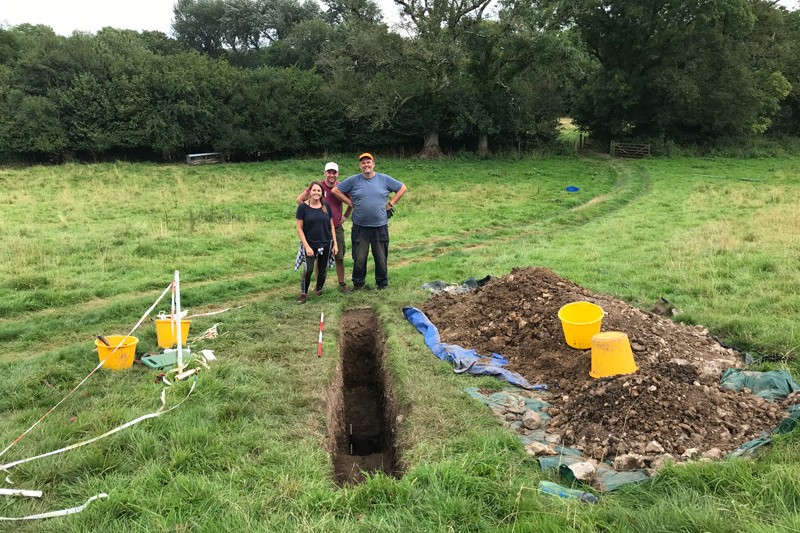Excavations of a prehistoric town in rural Dorset – the largest unenclosed settlement yet uncovered in the UK – have revealed more about the extent of the Iron Age occupation and the people who lived there.
Bournemouth University (BU) archaeologists are investigating the site in Winterborne Kingston - dubbed ‘Duropolis’, after the local Iron Age tribe the Durotriges – which was first uncovered last year, and have shown more about the extent of the pre-Roman settlement.
Covering an area of just under four hectares, the densely occupied area contained over 150 roundhouses, along with substantial storage facilities, animal pens and agricultural outbuildings.
The site appears to have been occupied from around 100 BC – at a time when most of the hillfort enclosures of Dorset, such as Maiden Castle and Hod Hill, were being abandoned.
The site is being excavated by BU staff and students as part of the annual Durotriges Big Dig.
Project co-director Paul Cheetham said: “Large open settlements such as this may have been the natural successors to the heavily defended hillforts, perhaps suggesting a time of relative peace and stability.”
Co-Director Dr Miles Russell said: “The existence of this site, coupled with the evidence that Maiden Castle was largely abandoned in the first century BC, shows that the idea that when the Roman legions arrived in AD 43, they attacked the hillforts and slaughtered the inhabitants inside is a myth.”
He added: “People think that towns were introduced by the Romans in the 1st century AD, and that’s simply not true.
“What we’ve got here are all the elements of an urban system a good hundred years before the Romans arrived and it seems to be continuing up until the point that they left.
“What we’re finding is continuity; a very densely settled area providing a good idea of what life was really like in prehistory at the time the Romans arrived.”
Excavations this year have uncovered the southernmost limits of Duropolis, uncovering a Late Iron Age cemetery in the process – with eight bodies discovered to date.
“Understanding of our Iron Age past is significantly improved by this find, given the advances in scientific investigation – such as DNA and isotope analysis which provide an insight into population movements and ancestry,” said Cheetham.
The skeletons have been taken to Bournemouth University to be examined further.
Cheetham said: “Accessing skeletal information from this date in the UK is extremely rare, as most pre Roman tribes either practiced cremated or placed bodies in rivers or bogs, so this data could completely change our understanding of the Iron Age.”
A further discovery at the site this year is a Late or Post Roman farming settlement, consisting of five buildings and associated kilns and ovens, dating to the period AD 300 – 450.
Such a settlement, which is rare in the archaeological record, is helping to shine a light into the so-called Dark Ages that followed the collapse of Roman power in the West.
“What we have here is evidence for a broad continuity of settlement from the Iron Age to the end of Roman Britain,” said Dr Russell.
“It was only after Britain cut itself loose from the protective embrace of Rome that things went disastrously wrong for the communities in this part of Southern England with the agricultural, social, military and political systems that supported them collapsing.”
He added: “We’re shining a light now into that period and we’re seeing how people lived, what they were eating, what things they were farming and it’s all information that’s never been discovered before in this area. In that respect we’re really opening up windows onto the past.”
Members of the public have the chance to see and explore the site for themselves at the Durotriges Big Dig Open Day at Winterborne Kingston on Sunday 10th July, from 10am to 3pm.
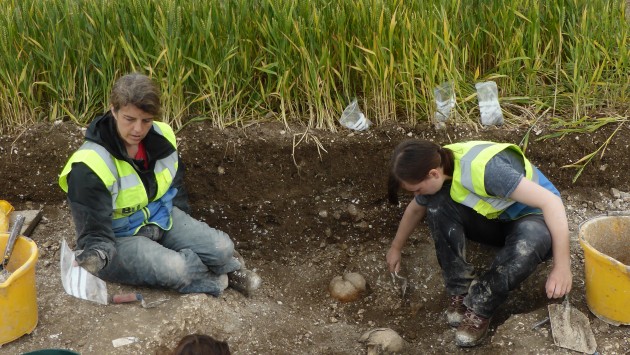
Students work to uncover human skeleton at Big Dig
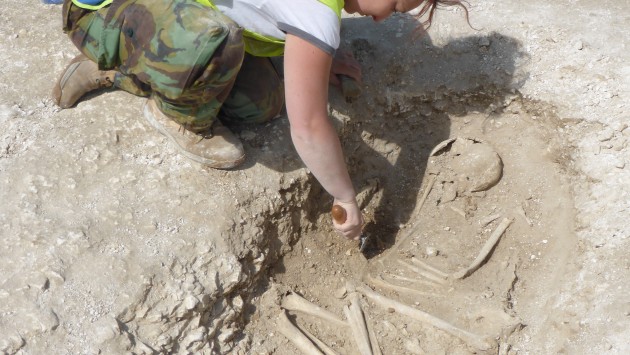
BU student excavates Iron Age skeleton
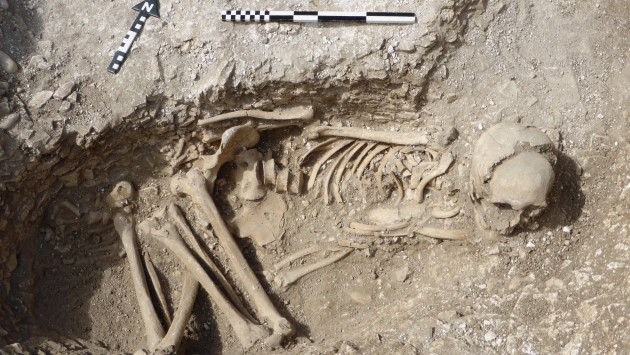
One of the Iron Age skeleton found during Big Dig
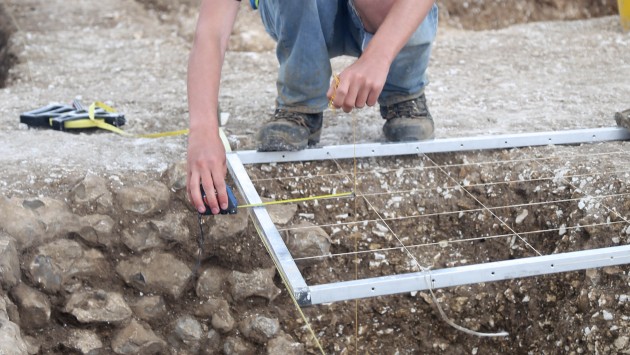
Examining a storage pit at the Big Dig site
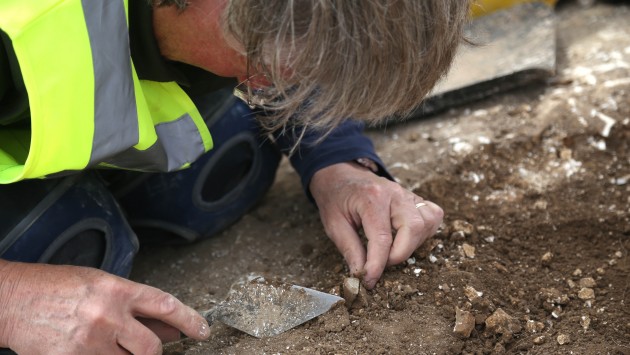
Excavating at the Big Dig site
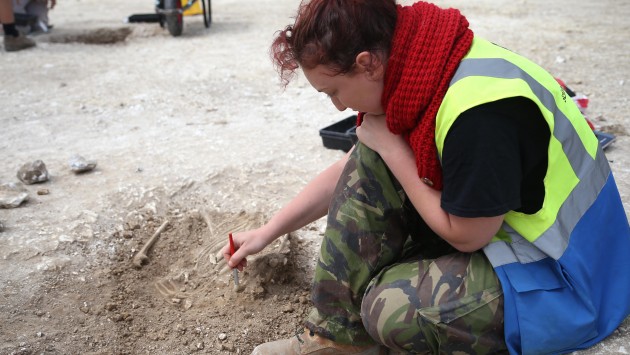
A student excavates skeletal remains
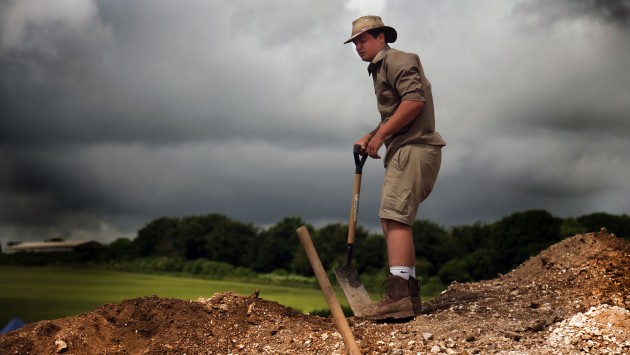
Digging in Duropolis
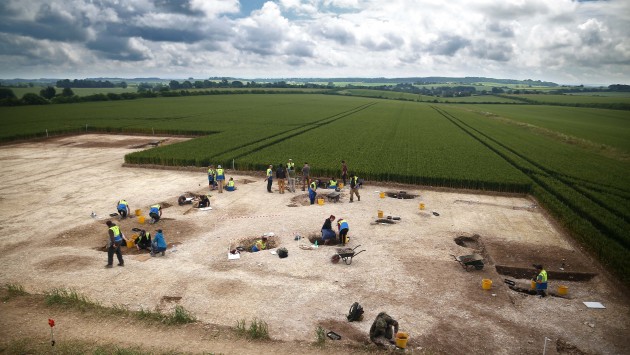
The Durotriges Big Dig site


